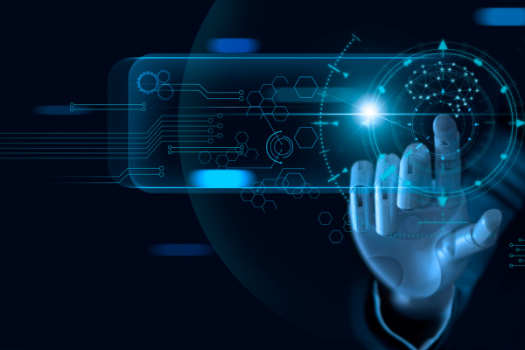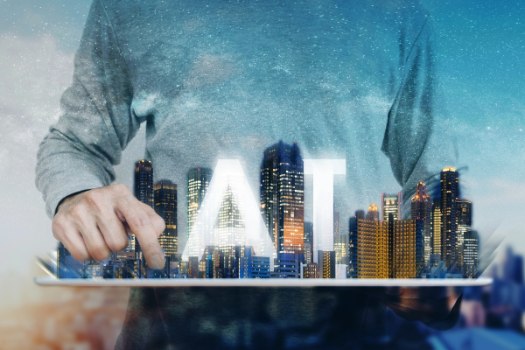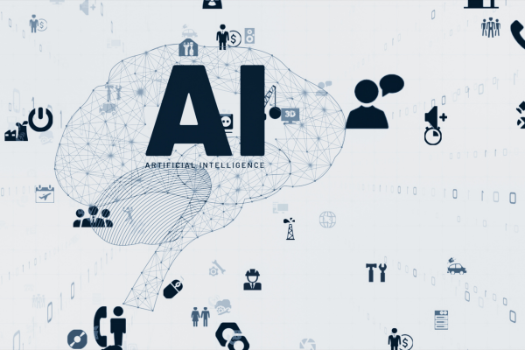.png)
How AI is Transforming the AEC Industry?
The construction industry is undergoing a major transformation with the integration of Artificial Intelligence (AI) into Building Information Modeling (BIM). AI helps automate tasks, improve designs, and predict issues before they happen. This combination of AI and BIM is not just about staying current; it’s about making projects more efficient, cost-effective, and sustainable. As AI continues to evolve, it is becoming a key tool for anyone involved in building design and construction. By embracing AI in BIM, companies can ensure they are ready for the future of construction.
The Role of AI in BIM
AI is making a big impact on Building Information Modeling (BIM) by enhancing how construction projects are designed and managed. One of the main benefits of AI in BIM is its ability to automate repetitive tasks. For example, AI can quickly identify and resolve clashes in building designs, which saves time and reduces errors. This is crucial because it ensures that different elements, like electrical and plumbing systems, don’t interfere with each other.

AI also plays a significant role in optimizing designs. It can analyze large amounts of data to suggest the best possible layouts, materials, and construction methods. This not only improves the efficiency of the design process but also leads to better, more sustainable buildings. Predictive analytics, powered by AI, help in foreseeing potential issues before they become problems, allowing teams to make informed decisions early on.
Moreover, AI in BIM enables more accurate project planning. By analyzing past projects and current data, AI can predict timelines and costs with greater precision. This leads to fewer delays and cost overruns, which are common challenges in construction.
In summary, AI enhances BIM by automating tasks, optimizing designs, and improving planning. This leads to more efficient, cost-effective, and successful construction projects.
AI in Construction Management
AI is revolutionizing construction management by making it easier to plan, monitor, and complete projects. One of the key benefits of AI in this area is its ability to manage large amounts of data efficiently. For instance, AI can analyze data from past projects to help construction managers make better decisions. This includes optimizing schedules, predicting delays, and ensuring that resources are used effectively.
AI also enhances project monitoring. With AI, managers can track the progress of a project in real-time. This allows them to identify potential issues before they become serious problems. For example, if AI detects that a certain task is taking longer than expected, it can alert the team so they can take corrective action. This proactive approach helps keep projects on track and within budget.
Resource allocation is another area where AI shines. By analyzing data on workforce availability, equipment, and materials, AI can ensure that resources are allocated in the most efficient way possible. This reduces waste and maximizes productivity, which is essential in large construction projects.
In summary, AI in construction management helps streamline processes, improve decision-making, and optimize resource use. This leads to more efficient projects, fewer delays, and better overall outcomes.
AI-Driven Innovations in Sustainable Construction
AI is playing a crucial role in advancing sustainable construction practices. One of the most significant ways AI contributes to sustainability is by optimizing energy efficiency in building designs. AI can analyze vast amounts of data to suggest designs that use less energy, reduce carbon footprints, and improve overall environmental performance. For instance, AI tools can recommend the best materials and layouts to maximize natural light and ventilation, reducing the need for artificial lighting and air conditioning.
AI also helps minimize waste in construction projects. By accurately predicting the amount of materials needed, AI reduces overordering and ensures that resources are used efficiently. This not only cuts down on waste but also lowers costs, making sustainable practices more affordable.

Moreover, AI enables more precise monitoring of a building’s environmental impact over its lifecycle. It can track energy consumption, water usage, and emissions, providing real-time data that can be used to make buildings more sustainable. AI can even predict when a building’s systems will need maintenance, ensuring they operate efficiently for longer.
In summary, AI-driven innovations are making sustainable construction more achievable. By optimizing designs, reducing waste, and improving resource management, AI is helping to create buildings that are better for the environment and more cost-effective in the long run.
Challenges and Considerations
While AI offers many benefits in BIM and construction, it also comes with challenges that companies must consider. One major challenge is the cost of implementing AI technologies. The initial investment in AI tools and training can be high, which might be a barrier for smaller firms. Additionally, AI systems require large amounts of data to function effectively, and managing this data securely is crucial. Concerns about data privacy and the potential for cyberattacks are significant considerations.
Another challenge is the need for skilled professionals who can operate and maintain AI systems. The construction industry traditionally relies on manual processes, so there’s a skills gap that needs to be addressed. Companies may need to invest in training or hire specialists, which can further increase costs.
Lastly, integrating AI into existing workflows can be complex. Many companies may find it difficult to change established processes and adapt to new technologies. Resistance to change from staff can slow down the adoption of AI, making it essential for companies to manage this transition carefully.
In summary, while AI holds great promise for BIM and construction, companies must navigate challenges related to cost, data security, skills gaps, and integration to fully realize its potential.
AI-Powered Estimation with BidLight 3.0
BidLight 3.0 is a cutting-edge estimation platform that leverages AI to make construction cost estimation more accurate and efficient. It features two sophisticated AI models: a data classifier and a geometry classifier. The data classifier works based on metadata, while the geometry classifier analyzes the shapes and forms within the project data. Together, these classifiers allow BidLight 3.0 to understand the geometry of construction projects and match them with the correct pricing items with an impressive 86% accuracy.
Trained on a vast construction dataset, BidLight 3.0 is designed to understand Revit/IFC geometry. It can predict costs for labor, equipment, materials, and time without the need for human intervention. This means that the software can automatically classify your Bill of Quantities (BOQ), saving time and reducing the risk of errors.

With BidLight 3.0, construction professionals can rely on an AI-powered tool that not only handles all construction data and geometry but also ensures that cost estimations are accurate and consistent. This innovation in AI technology makes BidLight 3.0 a valuable asset for anyone looking to streamline their estimation process and improve project outcomes.
Conclusion: The Future of AI in BIM and Construction
AI is set to play an even more significant role in the future of BIM and construction. As the technology advances, its integration with BIM will lead to more efficient, sustainable, and cost-effective construction practices. AI will continue to automate complex tasks, improve project planning, and enhance decision-making, making construction projects more predictable and manageable. For companies in the construction industry, embracing AI in BIM isn’t just an option—it’s becoming a necessity to stay competitive.
As AI evolves, it will unlock new possibilities, from smarter designs to better resource management. The future of construction will be shaped by those who adopt these innovations, leading to safer, more efficient, and more sustainable buildings.